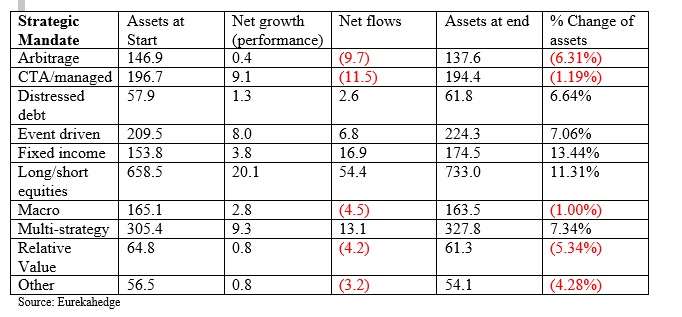 The independent data provider Eurekahedge says in its most recent report that funds investing in India are still recording large gains. Specifically, such funds have enjoyed eight consecutive months of positive returns, and are now up 30.65% year to date.
The independent data provider Eurekahedge says in its most recent report that funds investing in India are still recording large gains. Specifically, such funds have enjoyed eight consecutive months of positive returns, and are now up 30.65% year to date.
India’s equities have also had a very strong year 2014, up 25.79% through the first three quarters.
To India’s east, stimulus measures by the People’s Republic have kept Chinese equities moving upward, but late in September Hong Kong experienced the start of mass demonstrations (which have continued) and as a consequence local stocks have sustained a sharp sell-off.
India accounts for much of the positive showing of Asia ex-Japan YTD. That positive showing, in turn, may be driving asset flows. Asia ex-Japan funds were the only regional mandate to report net asset inflows during September.
In single-month performance terms, though, September was nearly dead even for Asia ex-Japan ($0.1 billion gain through performance). It was dead flat for Japan ($0.0).
Year to Date Numbers by Region
The table below (adapted from Table 1 in the Report) gives regional figures for the 2014 through September in US $billions, rounding up to 1 decimal place.

As you can gather from the red ink, this has not been a good year thus far for funds with a Latin American mandate. That remains true if we look at September specifically. Managers with that mandate showed a net growth (performance) of -$0.6 billion and a net outflow of $2.2.
The report mentions several reasons for this. For example, the fact that returns in the developed world are improving has encouraged investors and multi-region managers to cut back on their Latin exposure. Strong currency depreciation relative to the U.S. dollar has also been a factor, as has the political situation in Brazil: traders spent September gazing into their crystal balls trying to determine the outcome of the October elections.
[Investors in Brazil, and in the region, are generally wishing well for Aécio Neves, the Brazilian Social Democracy Party candidate for President. In the first-round voting on October 5th, Neves won a position in the run-off election against incumbent Dilma Rousseff.]
Also, in mid-September, Moody’s Investors Service downgraded Brazil’s credit outlook to Baa2, saying that the country’s ratio of government debt to gross domestic product compares unfavorably to the median for Baa rated nations.
Meanwhile for fund managers in Latin America the only good news there, such as it is, is that they have of late outperformed the MSCI Latin American Index, which was down 7.74% in September.
Year to Date Numbers by Strategy
The table below, also excerpted from the figures in the report, looks at the same period broken down by strategic mandate.
Investors this year have been pulling money out of CTA/managed futures, arbitrage, and macro funds. These classes of funds have lost respectively $11.5 billion, $9.7 billion, and $4.5 billion to net redemptions. The leading strategies in terms of positive flow have been: long/short equities ($54.4 billion); fixed income ($16.9 billion); multi-strategy ($13.1 billion).
In general, money flows from the cold hands toward the hot hands. So it is no great surprise that the long/short equities, the recipients of that large inflow, have been the best performer in the YTD. Nor is it surprising that arb, one of the victims of large net redemptions, has shown the slowest growth.

Overall, the hedge fund industry has notched performance-based gains of $56.4 billion in 2014 thus far, despite a slight performance based loss in September.



